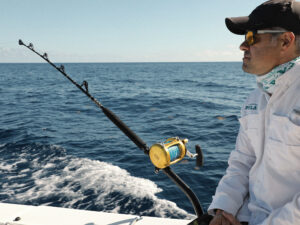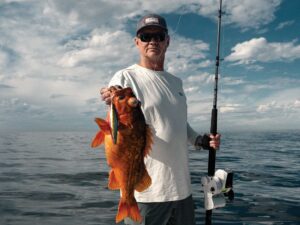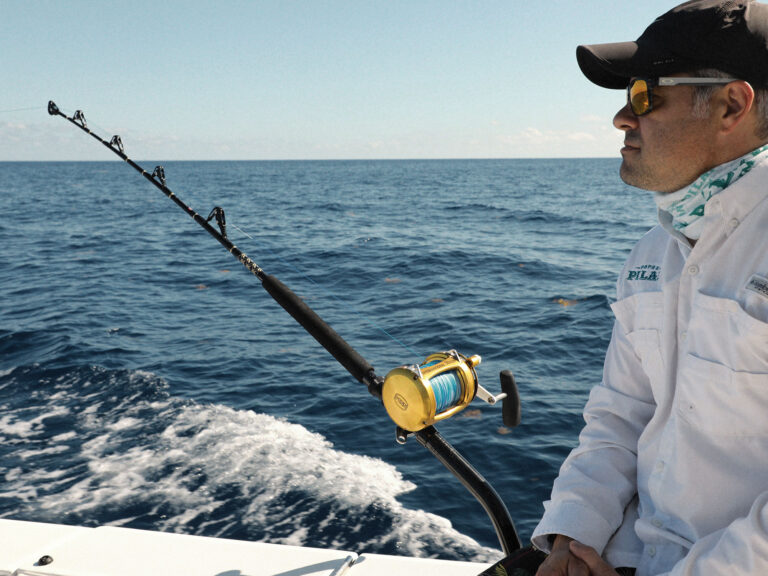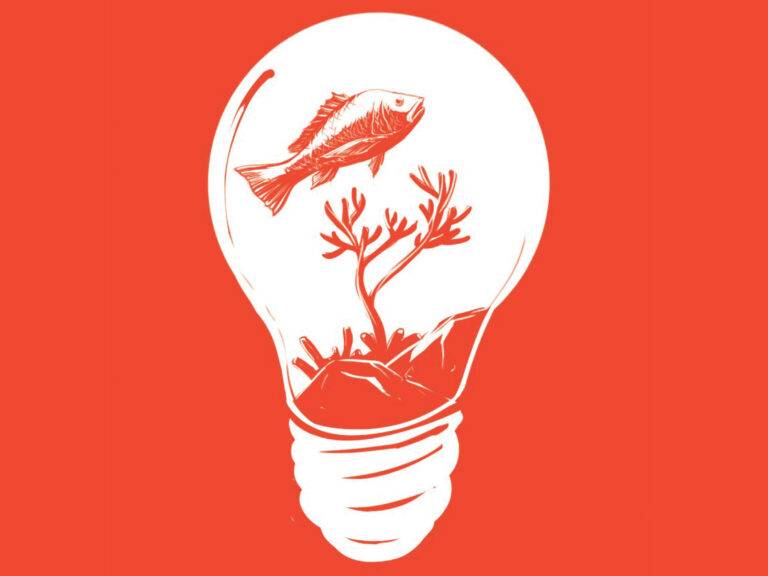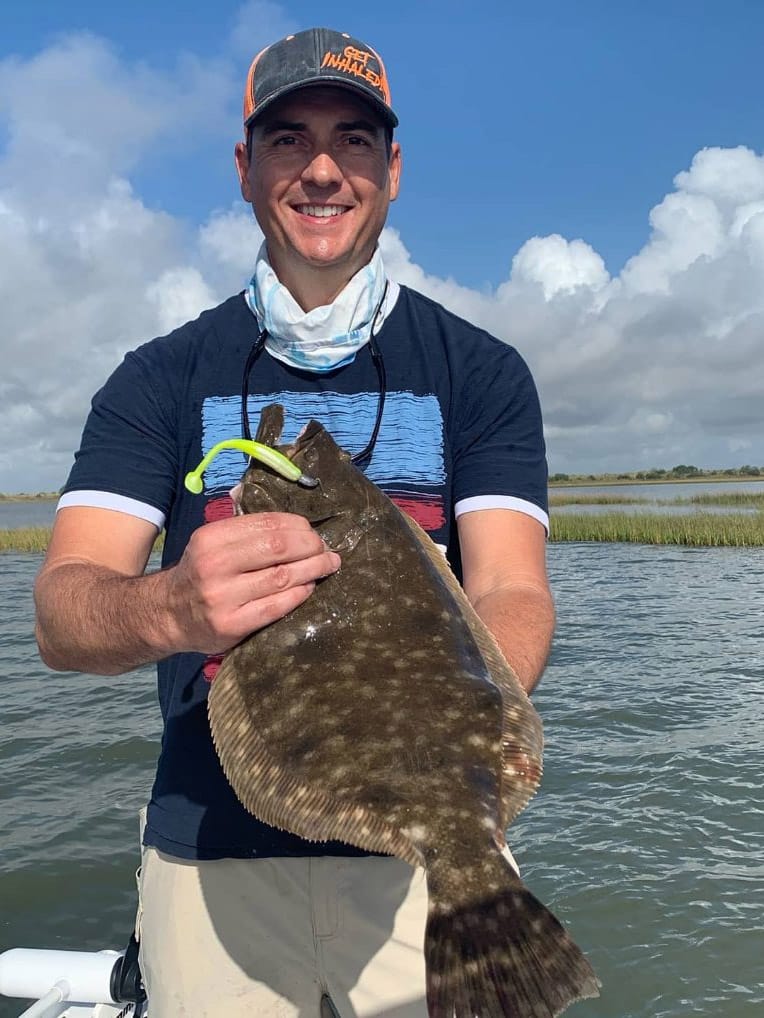
Southern flounder are a favorite among inshore anglers from North Carolina to Texas. They are widespread and relatively common, they are delicious, and under the right conditions will eagerly hit a variety of baits, both natural and artificial.
That being said, no one is suggesting flounder fishing is easy. They can be picky and sometimes hard to find, especially the bigger “doormats.” To help you put more flatfish in the boat, we spoke to some of the best flounder fishermen from around the Southeast. Here are some of the tips and tricks they use to give them an edge.
Find Flatfish on the Ledges
Jake Markris, of Fairhope, Alabama, is a die-hard flounder fisherman. He uses light tackle and mainly 1/4-ounce jigs, and his specialty is working sandbar drop-offs and small, inshore ledges many anglers overlook.
“Flounder relate to the slightest drop-off, sometimes only 6 or 8 inches, and a 1- or 2-foot ledge can be a real fish magnet,” he explains. “I use a boat to get to prime fishing locations, but I find that wading is often the best way to approach flounder in shallow water. Wading doesn’t spook the fish, and you can use your feet to feel for the little drop-offs that often hold fish.”
Markris fan-casts to these drop-off areas, probing the bottom with jigs. Casts made parallel to the ledge are often most productive because the lure is kept in the strike zone throughout the retrieve.
Markris also points out that ledges are best fished when the current is flowing from shallow to deep. In this scenario, flounder often gather on the deep side of the ledge, waiting for bait to be swept off the shallow flats.
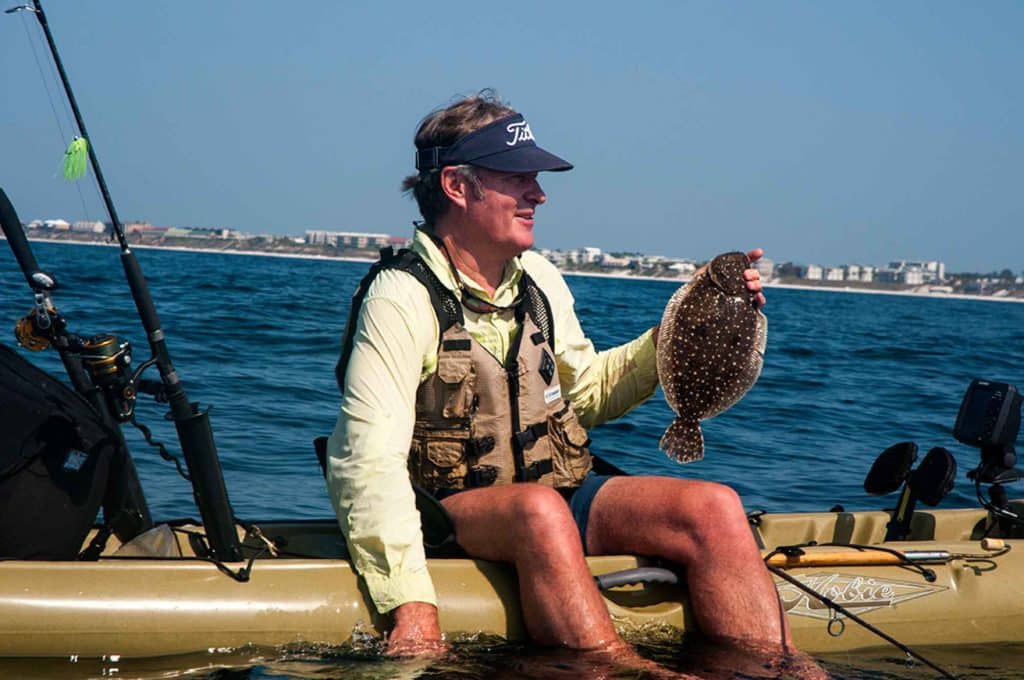
Follow Flounder Tracks
Ever heard of “flounder tracks?” You can actually see where flounder have been if you examine shallow mud and sand flats at low tide. Next time you’re out on a flat at low tide—maybe seeking bait—look for imprints of where flounder buried themselves on the bottom to hunt during a higher tide. It will look like just what it is: the outline of a flounder.
Find a flat with lots of these tracks, and it will give you a good idea of where to fish when the tide comes back in. Although walking around on a flat when there’s little or no water on it is scouting when you might rather be fishing, it is legwork that can locate some real hot-spots.
Flounder tracks stand out well and are surprisingly easy to spot. They are a sure sign of an area where flounder like to be.
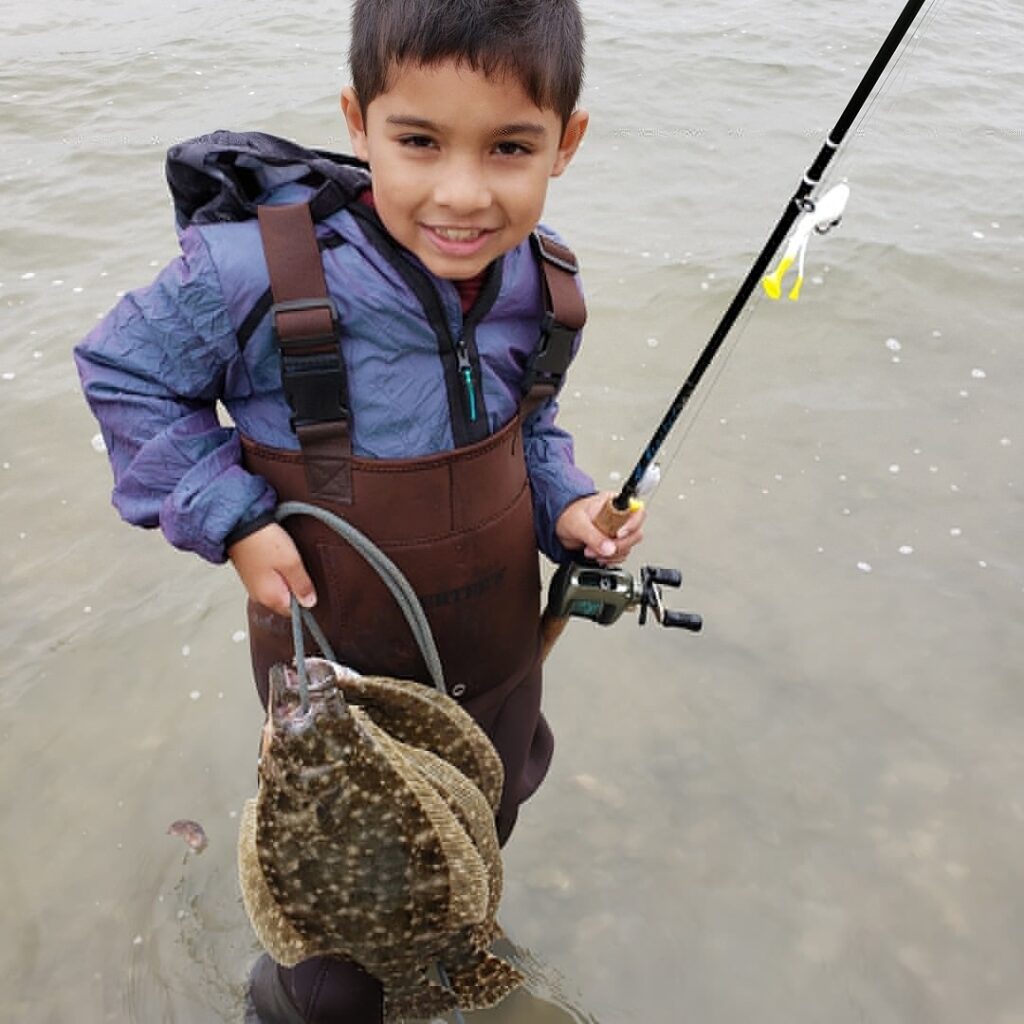
Drag a Lure on the Bottom
Capt. Michael Okruhlik is the owner and lure designer of Knockin Tail Lures. He has spent a lot of time on the water testing soft plastics, and flounder are a primary target in the Texas marshes.
“To effectively catch flounder, I advocate keeping the bait in constant contact with the bottom,” he says. “By pointing my rod tip down and using a sweeping motion, I create a dust trail that attracts fish. When I feel the initial tap, I pause, waiting for a second and possibly a third bump. Flounder usually hold on longer than trout, likely trying to injure their prey before swallowing.”
When he’s specifically targeting flatfish, Okruhlik focuses on structures like bulkheads and rocks where larger flounder find security as well as plentiful baitfish. Small drain openings can be prime locations on an outgoing tide, particularly if they flow from marsh pools full of bait. Even smaller drains shouldn’t be overlooked, as they can be easily missed but yield good catches.

A Fancy Flounder Rig
The “flicker rig” is simply a modified version of the standard fish-finder rig, which many anglers use for working live baits. It’s especially popular with North Carolina flounder fishermen. Like the basic fish-finder, this flounder fishing rig begins with the fishing line running through an egg, bullet or flat sinker, which is then tied to a barrel swivel. Next, a 2-foot section of mono that’s lighter than the main line is tied to the opposite end of the barrel swivel. Roughly 1 foot from the leader end, a bright-colored foam or cork float is positioned. Some floats have plastic “stoppers” at their ends for sure positioning, and yellow or red floats are preferred. A couple of small, red, plastic beads are threaded onto the leader, followed by a small, chrome or brass spinnerblade. Many anglers prefer Colorado blades because they give off a lot of flounder-attracting vibration, but willow-leaf or Indiana blades can be used as well.
A clevis can be used to facilitate the spinning action of the blade. Lastly, thread a couple more plastic beads onto the leader and tie on a suitable hook, such as a 1/0 Kahle. The float keeps the bait off the bottom, where it’s more vulnerable and easily seen by fish. The float’s bright color serves to attract flounder, as does the spinnerblade. The beads allow the spinnerblade to turn freely on the fishing line without binding against the hook, cork or tangling in the line.
Bring Them to the Boat
“About half the flounder I catch are taken less than a rod length from my boat,” says Bo Hamilton, of Ocean Springs, Mississippi. “Flounder often don’t take a bait or lure right away, but follow it during the retrieve. When flounder do this, they usually settle to the bottom, right under the boat. Therefore, it’s a good idea to periodically work a jig or bait directly under the skiff. It’s amazing how many flounder can be caught this way. Sometimes it takes several tries, but if there’s a flounder down there, it can be made to strike by repeatedly dropping a jig or natural bait in front of it.”

Flounder Up the Creek
According to Capt. Mark Noble of Brunswick, Georgia, the myriad creeks that feed into bays, bayous, rivers, sounds and the Intracoastal Waterway offer prime, largely untapped flounder action.
“Chasing creek flounder is classic ‘spot’ angling, meaning that a certain spot will frequently yield several fish in short order,” says Noble. “Falling tides are normally best, and almost any creek run-out can hold fish. The best run-outs are often located near deep creek bends. Frequently, a creek bend that has several run-outs pouring in from different directions will hold a particularly large number of flounder.
“If I hook a fish or two, I’ll frequently ease over a lightweight anchor or nose the skiff into the marsh until the area is completely and thoroughly worked. But I never fish a place too long. I prefer to keep moving during the falling tide. The key to success is covering the water quickly, quietly and efficiently.”
Flippin’ for Flatties
Flippin’ is a technique developed by freshwater bass anglers to fish heavy cover. Inshore fishermen have found that flippin’ is a great way to target flounder in hard-to-reach spots, such as under docks. While most bass anglers flip with baitcasting gear, you can also use your regular inshore spinning outfits for this technique.
With the trolling motor, ease in close to whatever structure you’ll be fishing. If you’re working without a trolling motor, anchor carefully near pilings, bulkheads or jetties. The casting technique is pretty simple. You’re essentially using the rod to swing a lure to the target area at short distance.
Use your left hand to pull an arm’s length of line through the guides as you raise the lure from the water. Then swing or flip the lure out with the rod tip, releasing the line in your left hand to provide some distance. Bounce your jig around on the bottom. If you don’t get hit, pull it up and flip it to the next spot. You can quickly and efficiently cover a piece of structure this way without getting hung up or cut off on barnacles. Use a trolling motor to methodically cover an entire area, or flip your way around the boat before re-anchoring to work some new bottom.

Drifting and Bumping
A very good way to locate flounder and learn a fishing area at the same time is to drift or bump troll. When you’re fishing a new area, find a likely target such as a jetty edge, a rolling bottom or some old pilings, run upcurrent of it and then turn the boat broadside to the flow and simply drift while working the bottom. This allows you to cover a lot of water at a good clip.
Fish bottom-bumping live-bait rigs or jigs, and use the trolling motor to hold the boat on course. With several anglers on the boat, this is a superb way to investigate a new creek because you can almost cover the entire width of the waterway in one drift.
When the current and/or wind is not favorable for drifting, use the trolling motor or bump the outboard in and out of gear to bump troll and cover water until you find the fish.

Keep It Moving
Guide Kirk Stansel of Hackberry, Louisiana says a great way to catch more flounder is to always keep your bait moving. This will help you locate rocks and pilings on the bottom, plus it presents the bait in a natural way.
“Flounder usually wait for a bait to come to them.” Stansel explains. “So it’s important to keep your bait moving.”
Stansel also has a trick for catching flounder around line-cutting structure. “Many times when a flounder hits a bait in a really tough tangle of pilings or rocks, it’s possible to gently lead the fish away from the cover before setting the hook. When a flounder wants a bait, you almost can’t pull it away from him. So when it strikes a bait in a tricky spot, such as under a dock, just slowly reel in line and lead the fish to a place where it can be played without the risk of a cut-off.”

Where to Catch Flounder
An important key to successful flounder fishing is familiarity with the area, according to top inshore angler and Mississippi native Kim Norton.
“When I first started flounder fishing, I picked a place inside an inlet where I knew other anglers consistently caught flounder,” Norton recalls. “I was determined to learn a half-mile section of that inlet shoreline better than anyone else. In time, I learned every foot of it. By fishing jigs and bottom-bumping baits, and by checking the area repeatedly with a very sensitive depthsounder, I got to know that water in just a season of fishing.
“Too many anglers rely solely on their depthsounder to show them the location of rocks and drop-offs where flounder might hold. But by slowly fishing jigs and/or live bait on a standard fish-finder rig, you learn a lot more about the bottom. This is especially true when using low-stretch braided line. With experience, you’ll be able to feel whether the bottom consists of mud, sand, oyster shell or rock. This will help you locate the best flounder-holding places.
“It’s important to understand that flounder are an ambush-type fish. They hold near structure, and when you find structure by feeling it with bottom-bumping lures and bait rigs, you’ll learn where to focus your fishing efforts – and put more fish in the boat as a result.”

Best Live Baits and Lures for Flounder Fishing
Live baitfish are numero uno for flatfish. Almost any type of small baitfish will work, but flounder can be selective, and you never know what they’ll want until you start fishing. For this reason, catching a variety of local baitfish can help dial in the bite. Use a minnow trap or throw a cast net in salt creeks and marshes to catch live bait near where you’ll fish. Flounder love mullet, menhaden, croakers, spot and mud minnows (killifish). They’ll also eat shrimp, but minnows are best for flounder.
Large baits (3 to 4 inches long) are best for those big doormat flounder. Hook large minnows through the lips and smaller baits through the eyes. Cast live baits to the edges of jetties, pilings, bulkheads and other structure before retrieving them ever so slowly across the bottom.
When it comes to artificial lures, grub-tailed jigs work very well, especially the curly tail models. Good colors are white, pink, smoke, silver and yellow. Sometimes tipping a grub jig with a piece of natural bait will tempt reluctant fish to strike. Strip baits made from small mullet or other baitfish can be very good on jigs, too.

